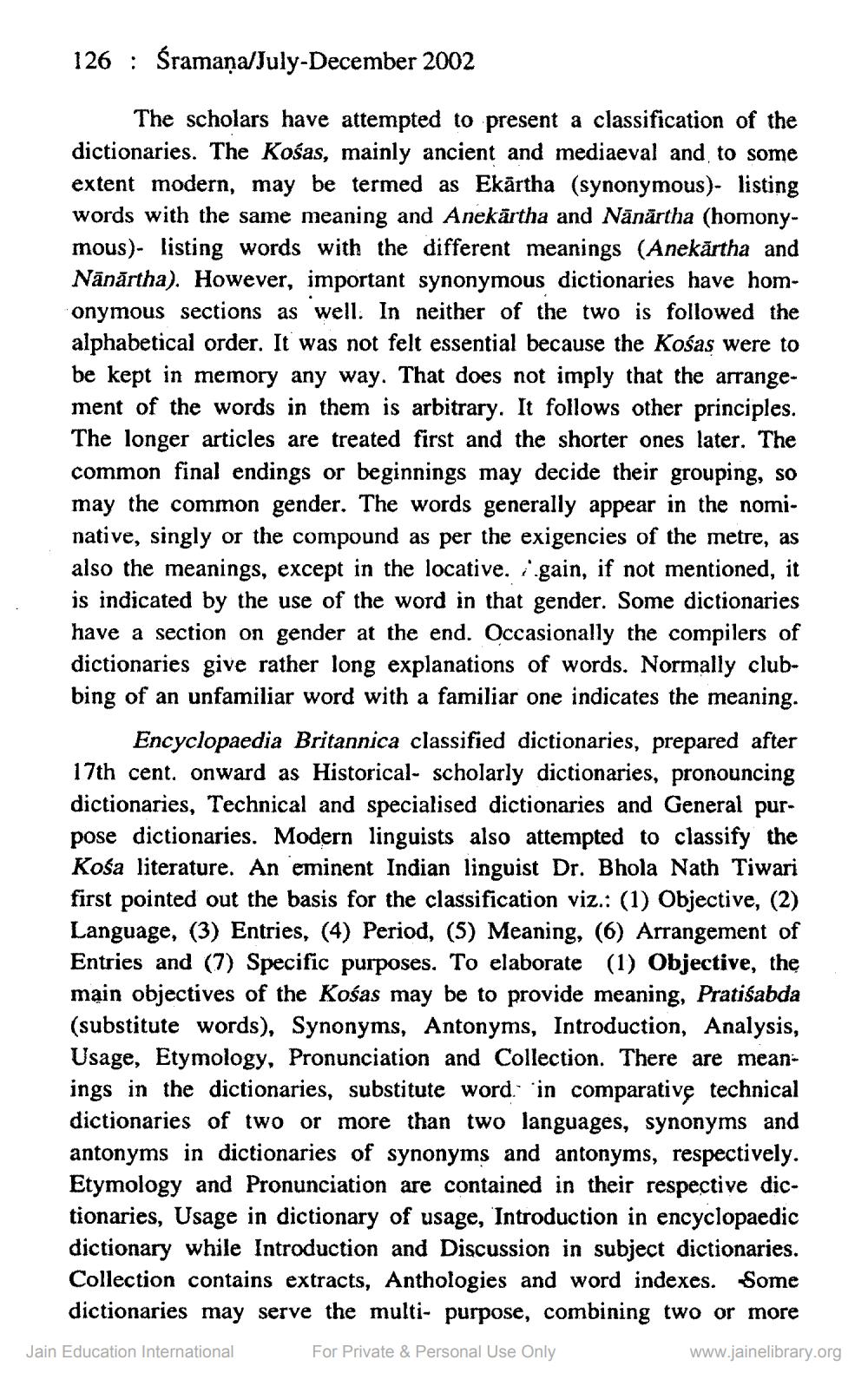________________
126 : Sramana/July-December 2002
The scholars have attempted to present a classification of the dictionaries. The Kośas, mainly ancient and mediaeval and to some extent modern, may be termed as Ekārtha (synonymous)- listing words with the same meaning and Anekārtha and Nānärtha (homonymous)- listing words with the different meanings (Anekārtha and Nānārtha). However, important synonymous dictionaries have homonymous sections as well. In neither of the two is followed the alphabetical order. It was not felt essential because the Kośas were to be kept in memory any way. That does not imply that the arrangement of the words in them is arbitrary. It follows other principles. The longer articles are treated first and the shorter ones later. The common final endings or beginnings may decide their grouping, so may the common gender. The words generally appear in the nominative, singly or the compound as per the exigencies of the metre, as also the meanings, except in the locative. i.gain, if not mentioned, it is indicated by the use of the word in that gender. Some dictionaries have a section on gender at the end. Occasionally the compilers of dictionaries give rather long explanations of words. Normally clubbing of an unfamiliar word with a familiar one indicates the meaning.
Encyclopaedia Britannica classified dictionaries, prepared after 17th cent. onward as Historical- scholarly dictionaries, pronouncing dictionaries, Technical and specialised dictionaries and General purpose dictionaries. Modern linguists also attempted to classify the Kośa literature. An eminent Indian linguist Dr. Bhola Nath Tiwari first pointed out the basis for the classification viz.: (1) Objective, (2) Language, (3) Entries, (4) Period, (5) Meaning, (6) Arrangement of Entries and (7) Specific purposes. To elaborate (1) Objective, the main objectives of the Kośas may be to provide meaning, Pratisabda (substitute words), Synonyms, Antonyms, Introduction, Analysis, Usage, Etymology, Pronunciation and Collection. There are meanings in the dictionaries, substitute word in comparative technical dictionaries of two or more than two languages, synonyms and antonyms in dictionaries of synonyms and antonyms, respectively. Etymology and Pronunciation are contained in their respective dictionaries, Usage in dictionary of usage, Introduction in encyclopaedic dictionary while Introduction and Discussion in subject dictionaries. Collection contains extracts, Anthologies and word indexes. Some
dictionaries may serve the multi- purpose, combining two or more Jain Education International For Private & Personal Use Only
www.jainelibrary.org




